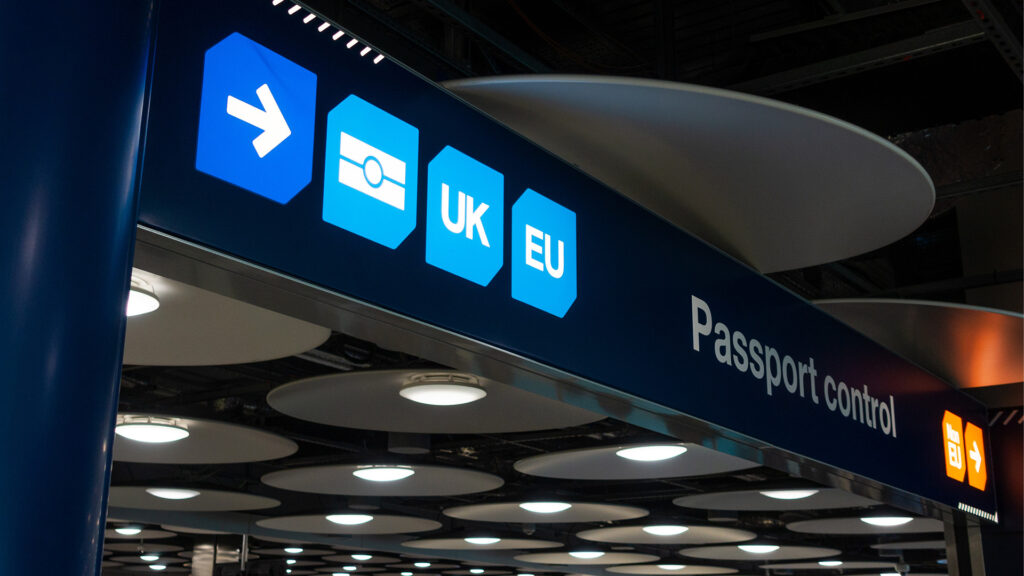UK businesses with employees travelling to Europe will soon face new rules that could impact work trips, client visits and cross-border meetings. The new rules form part of two connected border systems being introduced by the European Union that will affect non-EU citizens travelling to Europe. We take a closer look at the new schemes and what businesses can do to prepare for the upcoming changes.
The EU Entry/Exit System
The EU has confirmed that its long-delayed Entry/Exit System (EES) will now launch on 12 October 2025. The new system is designed to track non-EU nationals, including British citizens as they enter and exit the Schengen area (which covers 29 countries in Europe). The EES checks will help enforce the rule that a visitor’s total stay in the Schengen area must not exceed 90 days in every 180-day period; a rule that has applied to UK citizens since Brexit.
From 12 October 2025, the EES will require all travellers to register their biometric data at the border, including fingerprints and facial images (children under 12 will not have to provide fingerprints). These details will then be stored in a central EU database. Participating countries can gradually implement the new system over 6 months, however, we anticipate some border crossings will implement the new system straight away, while others will still rely on traditional passport stamping for longer. This mixed approach will last until April 2026 when the new system becomes fully operational.
European Travel Information and Authorisation System
Another key change is the European Travel Information and Authorisation System (ETIAS), which is expected to launch between October and December 2026. ETIAS is an online travel authorisation that UK travellers will need to obtain before visiting most EU countries. Although the system has been in the works for several years, the cost of an ETIAS has only just been confirmed at €20 (£17), which is nearly triple the originally proposed fee of €7 (£6). However, it will be free for children under 18, adults over 70 and some family members of EU citizens. An ETIAS authorisation will be valid for three years or until the traveller’s passport expires (whichever is sooner), after which, it should be renewed for future visits.
More information about the ETIAS scheme, and its counterpart scheme for travel to the UK (the ETA scheme), can be found in our article here.
How will this impact you?
For employers, self-employed people and holidaymakers alike, these changes mean that European travel will involve more paperwork and the potential for longer wait times and unpredictability at borders. Companies should begin preparing now by reviewing internal travel policies and ensuring that employees are aware of the new requirements. It will be particularly important to factor in additional time for cross-border travel during the transition period, as procedures may vary widely between different countries’ crossing points. For individual travellers, it’s just another thing to remember along with your sun cream!
Although these updates will introduce some complexity to European travel, early preparation can help you avoid disruption. Employers whose work includes frequent EU travel should consider whether any operational or scheduling changes are needed ahead of the new systems going live.
If you would like to receive all the latest updates and advice from our Business Immigration team, you can sign up for our newsletter.
How can we help?
If you’re unsure how these changes affect your business, it may be worth seeking legal or compliance advice in advance. At Capital Law, we regularly provide bespoke advice to clients on matters exactly like these.
We’re here to help, so if you need any support in preparing for these changes, please do get in touch with our Business Immigration team.




